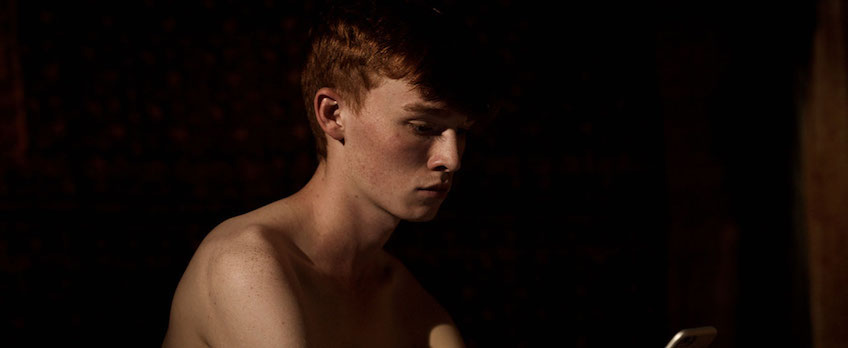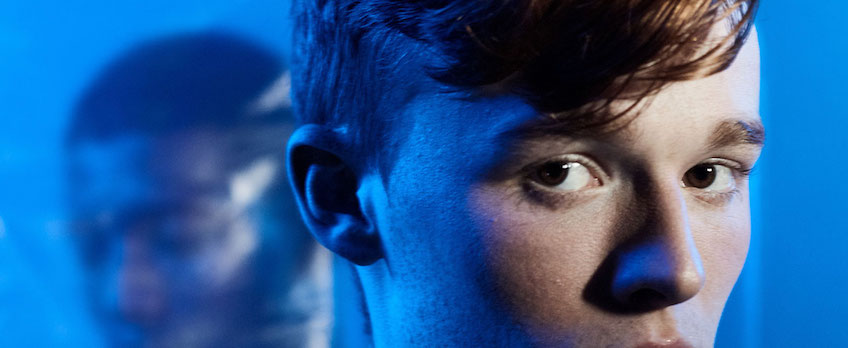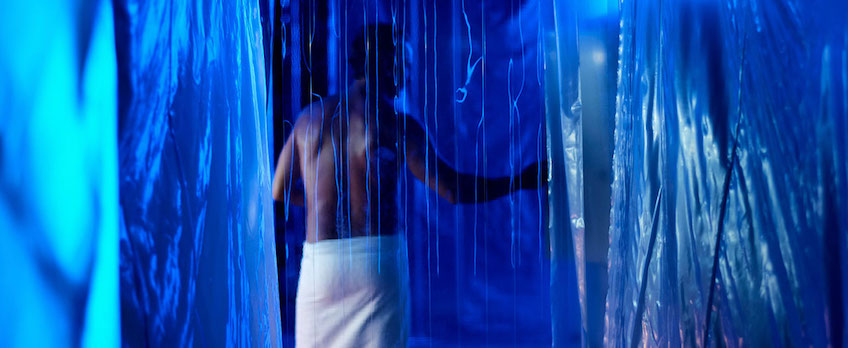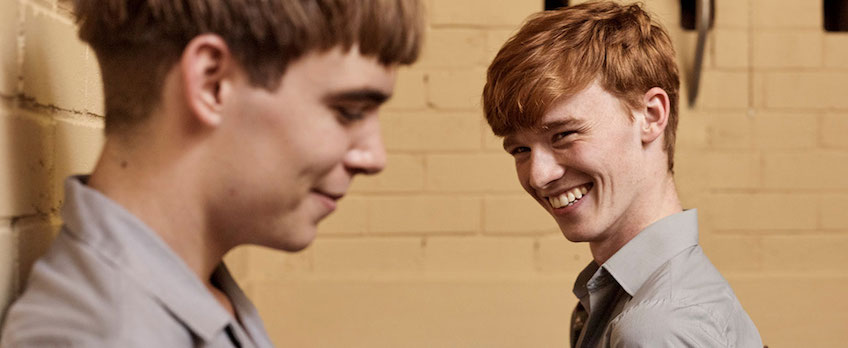Interested in writing for our blog? Send your pitches to editor@miff.com.au.
Through the Looking Glass: An Interview with Sequin in a Blue Room’s Conor Leach

Samuel Van Grinsven’s Sequin in a Blue Room plays like a dance. Bodies intertwine, anonymised bedrooms blur into one another, notifications from dating apps flash across the screen, caught in their own digital choreography.
The film’s leading man: Conor Leach, giving a remarkably assured first-time feature performance as 16-year-old Sequin, whose endless succession of casual hook-ups leads him to a sex party known only as the Blue Room – a space as enigmatic and electric as its name suggests. As he brushes with danger, the film moves between coming-of-age, thriller, slasher…a genre pastiche with a much-needed queer bent.
2019 MIFF Critics Campus participant Michael Sun spoke to Conor about queer representation, Cate Blanchett, and the loneliness at the heart of the film.

Conor Leach in Sequin in a Blue Room
Sequin is such a bold first feature! It feels like a radical departure from the kind of queer films we’ve seen in Australia recently. Where do you locate the character in the broader queer landscape?
So often in Australian cinema and television, queer people are othered, and their sexuality is an obstacle. Sequin is not like that at all – the character’s sexuality and sex life aren’t things he has to overcome. The conflict and tension in the film result from the people he’s coming into contact with, and the hole of obsession he falls into. He’s actually very comfortable with his own identity, which I love! I’ve never seen a queer teenager written with such autonomy and agency and self-efficacy.
Those ideas of agency are linked directly in the film to sex – explicit queer sexuality, which is so great to see, especially when so many other films have shied away from it. Did you feel like you were rebelling against that kind of coyness?
Looking at it from the outside now, I think it is quite a rebellion against mainstream cinema tropes! But at the time it just seemed so logical that we were doing those sex scenes, because [director/co-writer] Sam was always very clear about their aesthetic and story purposes; what each scene had to reveal.
What drew you to Sequin’s character? Was there ever a time where you saw yourself in Sequin’s experience?
One thing I particularly empathised with was his relationship with his father – his need to appear strong and resilient to his father, but also his need for care from him. Basically: I need you but I need to be strong for you. I also experienced that need to appear totally secure as a teenager.
Sequin’s experience of queerness, though, was very different to my own growing up in Brisbane – especially a conservative part of Brisbane. It took me a while to feel comfortable with my identity, while Sequin – being of a slightly younger generation – isn't necessarily surrounded by homophobia every day; he doesn't feel the need to question himself. It was an exciting reality.

From Sequin in a Blue Room
I think that generational tension is really evident in Sequin. We have the clash of old and new queer histories – the Blue Room as a reference to the public sauna space versus the contemporaneity of the Grindr-esque dating app…
Yeah! There definitely is that historical underpinning to it. The Blue Room represents limitlessness, total freedom, total possibility – an underground queer culture that Sequin isn’t familiar with. Throughout the film he also comes into contact with older members of the queer community who’ve had a very different experience to him – like Virginia [a drag queen played by Anthony Brandon Wong].
I loved Virginia! She felt like an homage to the drag queens of queer film classics, that notion of overt and unabashed femininity.
It was a beautiful honouring of that culture. And a real testament to how that culture can empower young queer people, which was really exciting to be a part of. On the days shooting the scenes at Virginia’s apartment, I put on the heels and I was like yesssss, here we go!
In other interviews, Sam’s talked about the influence of New Queer Cinema on his filmmaking. Are there any queer performances which have inspired you?
Cate Blanchett in [Todd Haynes’s] Carol – I had a mental breakdown watching that film! It’s just the most exceptional performance, and the film shows the tenderness of its central relationship really beautifully. Cate Blanchett's my favourite actor – her physicality struck me the most in Carol, and I loved delving into Sequin’s physicality, because he doesn't say a lot. There was time to explore how he carries himself, how he looks at people, how he breathes.

From Sequin in a Blue Room
Your physicality changes as Sequin’s character evolves. Do you think it also changed as the film’s genre shifted between coming-of-age, thriller, even slasher (at points when Sequin’s pursued by an older stalker)?
Definitely. I've tried to mark a journey from him being very confident, open and relaxed to something more tense and held towards the end.
The film always struck me as a coming-of-age, though cut like a thriller. Fundamentally, it's about loneliness – how people respond to that and come to grips with it. So for me, his journey is one of seeking connection and finding someone who needs him. In that sense, I guess it is a coming-of-age. He learns something, he matures somehow.
Reading it in terms of loneliness is fascinating. It’s such a specifically queer loneliness, too – trying to escape it via hook-up apps but ultimately unable to shake it off. You see it in the film so intimately, even from something as simple as the recurring motif of Sequin separated from us through doors, windows, shower panes.
That was definitely something we talked about – the idea of Sequin on the outside, discovering and searching. Those scenes were actually really hard to shoot because I had to imagine what was on the other side of the door! That was funny.
I think it's quite a childlike image, too. Maybe less so in the parts where he's looking at himself a mirror, but there are moments where he's peering through apartment doors investigating – hands in front of him, fogging up the glass. There is something really childlike about it, which for me, reveals the true nature of the character. It lets you see through his eyes.
Sequin in a Blue Room played the 2019 Melbourne International Film Festival on Wednesday 14 and Friday 16 August.